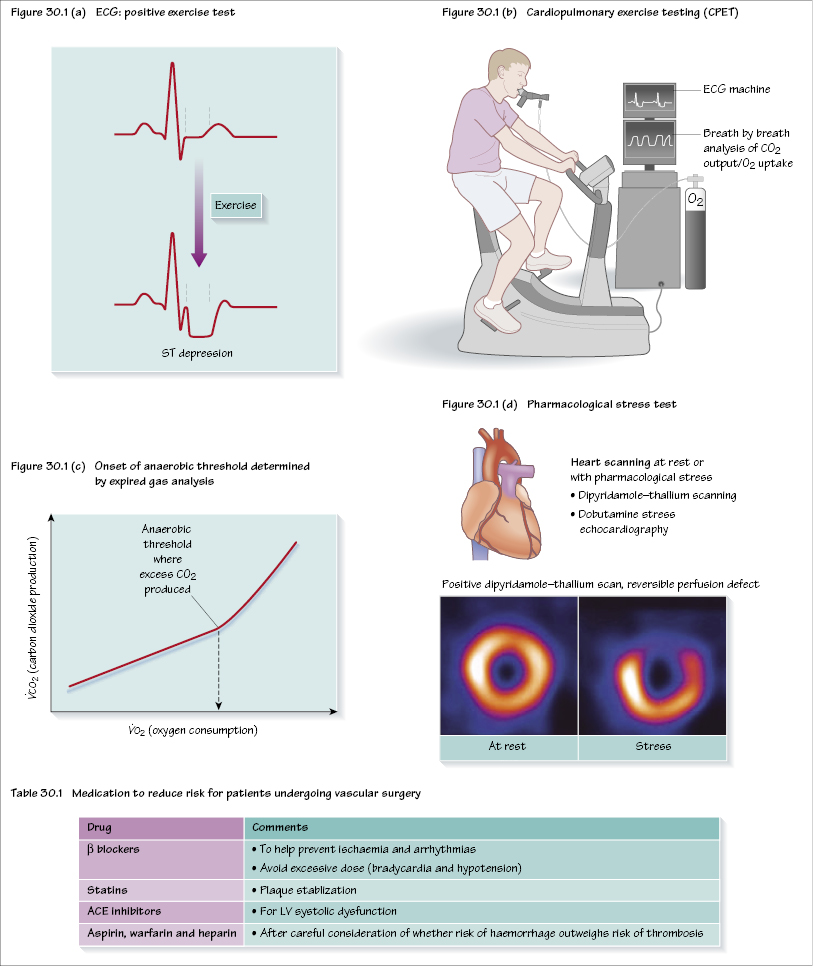30
Anaesthesia for vascular surgery

Vascular surgery encompasses both ends of perioperative risks: arterial surgery, which is major, high-risk surgery, and venous surgery, which is very low-risk surgery, often performed under local anaesthesia. This chapter will focus on arterial surgery, which presents one of the biggest challenges for anaesthetists.
Arterial interventions place the patient at great risk of perioperative thrombosis and embolism. This is because the atherosclerotic process is generally widespread, affecting most major arteries. Moreover, given the high incidence in these patients of ischaemic heart disease, diabetes, renal dysfunction, cigarette smoking and increasing age, it becomes clear why this surgery presents such a high risk, with mortality or major cardiac complications of over 5%. The advent of less-invasive procedures may help in risk reduction (e.g. endovascular aneurysm repair [EVAR]).
Preoperative assessment
These patients require detailed assessment of physiological reserve. Many standard tests, such as ECG, are not very sensitive or specific and therefore exercise testing may be undertaken. However, these patients may not be able to exercise (e.g. due to claudication) thus testing reserve may be difficult.
Given that cardiac ischaemia and infarction accounts for the largest morbidity and mortality in this patient group, a full cardiac assessment is required. This may include:
- Resting and exercise ECG (Figure 30.1a).
- Cardiopulmonary exercise testing (CPET; Figure 30.1b) gives an objective assessment of reserve. Oxygen consumption and carbon dioxide production are measured. The point at which oxygen delivery becomes inadequate to meet energy demands of aerobic metabolism is called the anaerobic threshold (AT; Figure 30.1c). The oxygen consumption at the onset of supplementary anaerobic metabolism is described in mL/kg/min. An AT of less than 11 mL/kg/min implies greatly increased risk; if this is coupled with myocardial ischaemia the risk is even higher.
- If exercising is not possible, pharmacological stress tests may be used to asse/>
Stay updated, free dental videos. Join our Telegram channel

VIDEdental - Online dental courses


